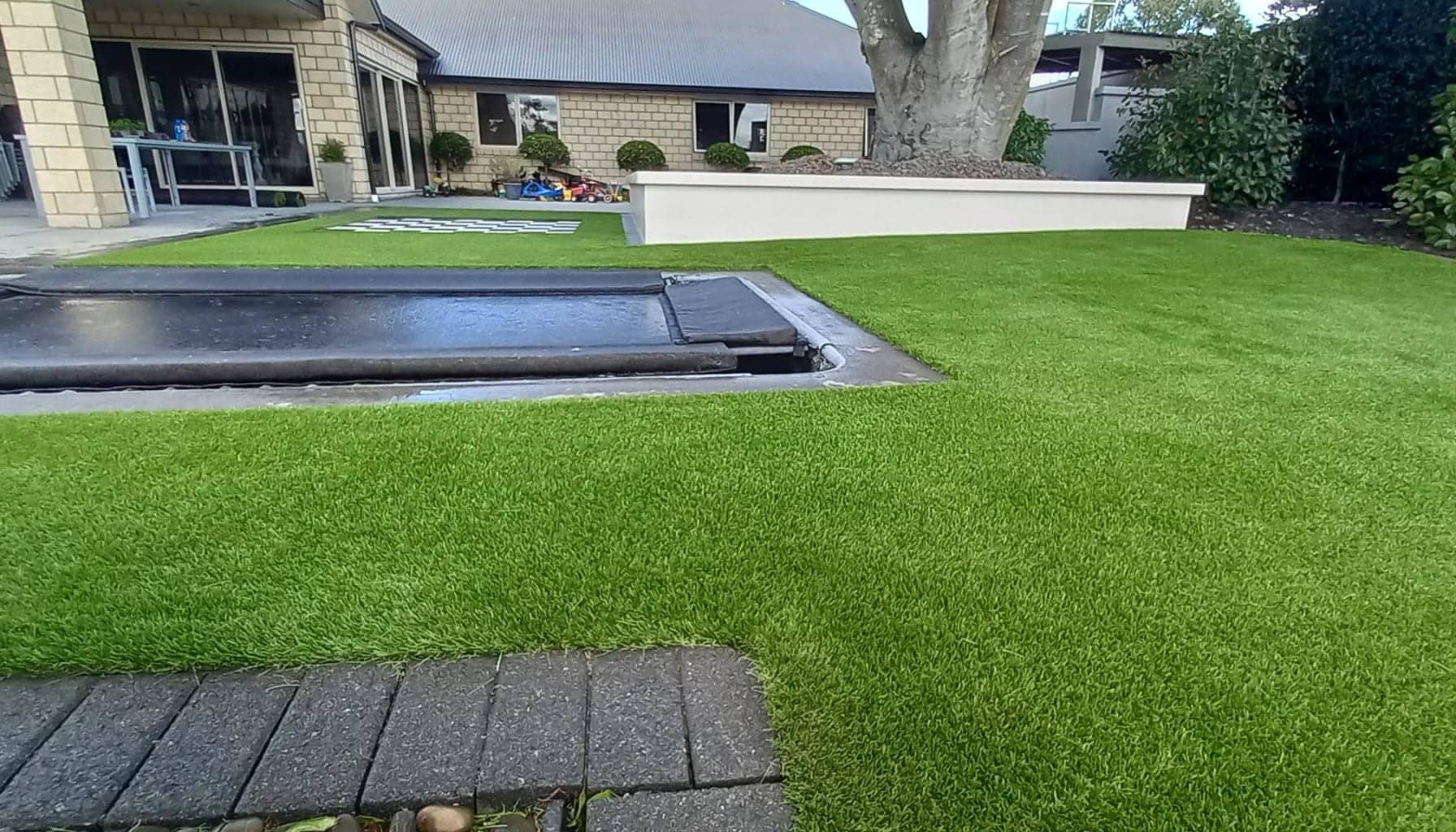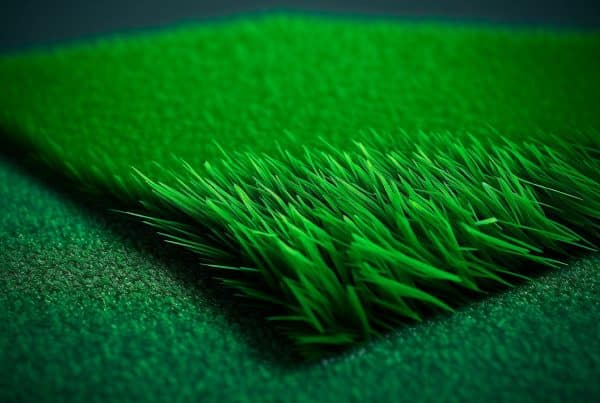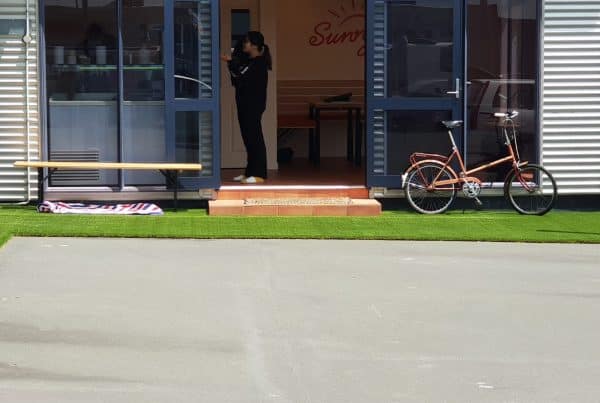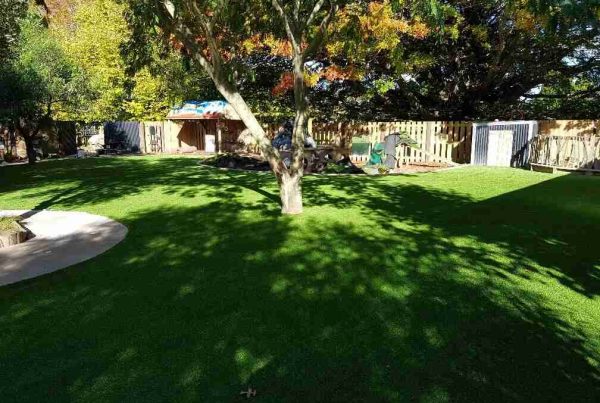Artificial grass has revolutionised landscaping, offering a low-maintenance alternative to natural lawns. At Unreal Lawns & Courts, we’ve seen firsthand how this innovative solution transforms outdoor spaces.
From residential gardens to sports fields, artificial grass provides year-round greenery without the need for constant watering or mowing. In this post, we’ll explore the diverse applications and numerous benefits of synthetic turf, helping you decide if it’s the right choice for your property.
Why Artificial Grass Outperforms Natural Lawns
Minimal Upkeep, Maximum Enjoyment
Artificial grass transforms landscaping by offering numerous advantages over traditional natural lawns. Its popularity stems from its consistently attractive appearance and significant reduction in maintenance efforts and costs.
The most compelling reason to choose artificial grass is the drastic reduction in maintenance requirements. Natural lawns demand regular mowing, watering, fertilising, and weed control. Artificial grass eliminates these time-consuming tasks. Studies have shown that the surface temperatures and human thermal comfort were similar for different turf types on cloudy and overcast days, according to research conducted in Hong Kong. This suggests that artificial grass can provide comparable comfort to natural lawns under certain conditions.
Drought-Resistant Beauty
Water conservation is a critical concern, especially in drought-prone areas. Artificial grass offers a sustainable solution to this problem. The Environmental Protection Agency reports that the average American household uses 1200 litres of water per day, with 30% dedicated to outdoor uses (primarily lawn care). Installing artificial grass can significantly reduce water consumption.
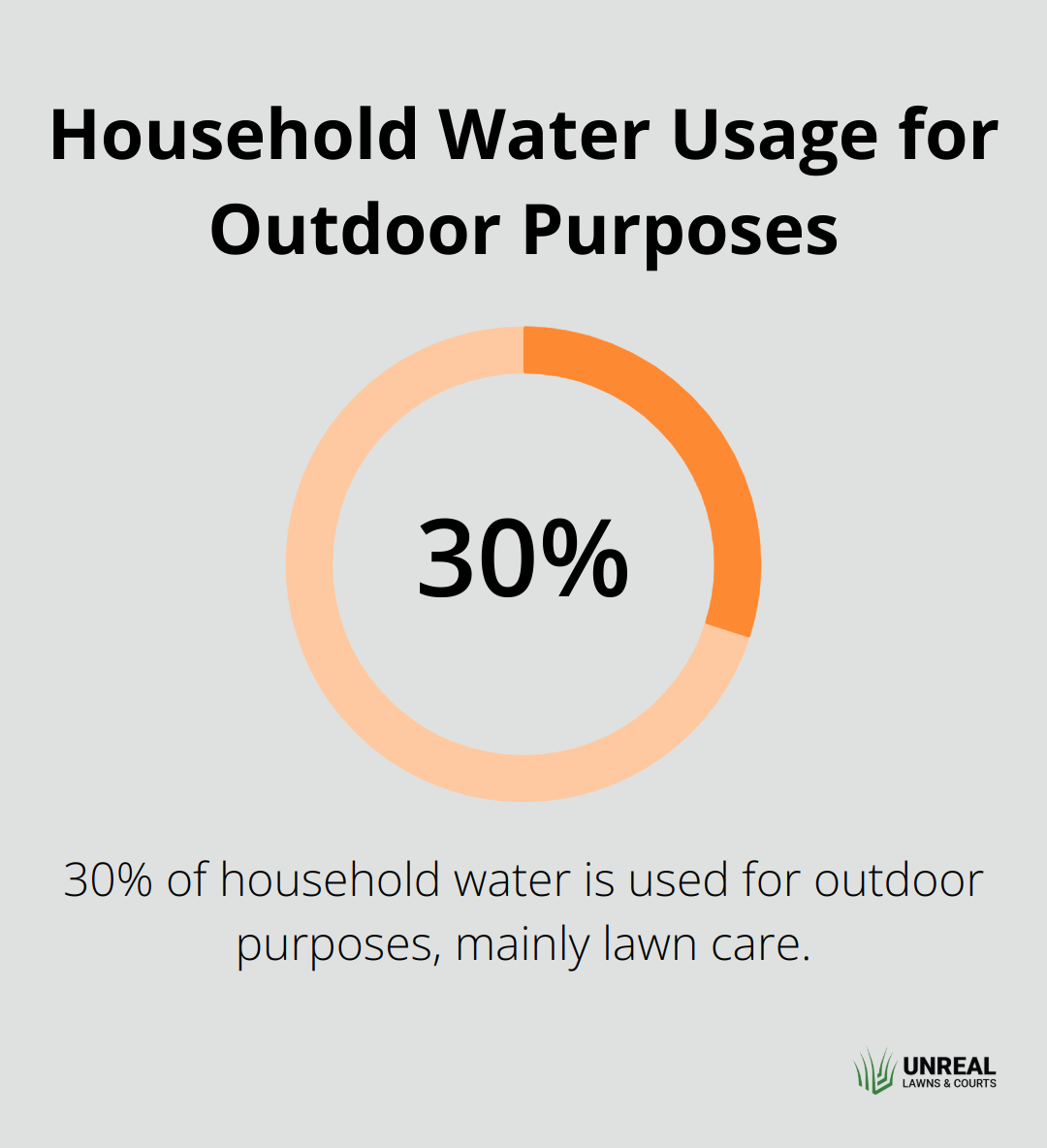
In Nevada, the percentage of residents taking a water-savings rebate for replacing natural grass with artificial turf has skyrocketed over the past decade, indicating a growing trend towards water conservation through synthetic lawns.
Long-Lasting Investment
The durability and longevity of artificial grass make it a wise long-term investment. While natural lawns may need reseeding or resodding every few years, high-quality artificial grass can last up to 15-20 years with proper care. This longevity not only saves money in the long run but also ensures a consistently attractive landscape. The Synthetic Turf can withstand heavy foot traffic, extreme weather conditions, and even pet use.
Cost-Effective Solution
Customers appreciate the long-term cost savings associated with artificial grass. The initial investment is offset by reduced water bills, elimination of lawn care equipment expenses, and savings on fertilisers and pesticides. The return on investment typically occurs within 3-5 years, depending on the specific installation and local water costs.
Environmental Benefits
Artificial grass contributes to environmental sustainability in several ways. It eliminates the need for harmful pesticides and fertilisers, which can leach into groundwater. Additionally, it reduces carbon emissions associated with lawn mowing and other maintenance activities. The reduction in water usage also helps conserve this precious resource, particularly in areas prone to drought.
As we move forward, let’s explore the versatile applications of artificial grass in various settings, from residential lawns to sports fields and commercial landscapes.
Where Artificial Grass Thrives
Artificial grass has transformed from a niche product to a versatile landscaping solution, finding its place in various settings. Its adaptability makes it an excellent choice for both residential and commercial applications.
Residential Spaces Reimagined
Homeowners increasingly turn to artificial grass to create low-maintenance, visually appealing outdoor spaces. In urban areas with limited green space, synthetic turf transforms balconies, rooftops, and small yards into lush retreats. Artificial grass offers numerous benefits beyond aesthetics, including low maintenance, high durability, and water conservation.
For larger properties, fake grass provides a consistent, manicured look without constant upkeep. It particularly benefits areas that are difficult to maintain, such as steep slopes or shaded spots where natural grass struggles to grow. Homeowners with pets find artificial grass especially advantageous, as it resists digging and cleans easily.
Sports and Recreation Areas Enhanced
Sports facilities and playgrounds benefit greatly from artificial turf. Its durability allows for consistent play conditions regardless of weather, reducing game cancellations and maintenance downtime. .
Playgrounds with artificial grass offer a safer play environment. The synthetic surface provides better shock absorption than many natural alternatives, reducing the risk of injuries from falls. Schools and public parks increasingly opt for artificial turf to create year-round usable spaces that require minimal upkeep.
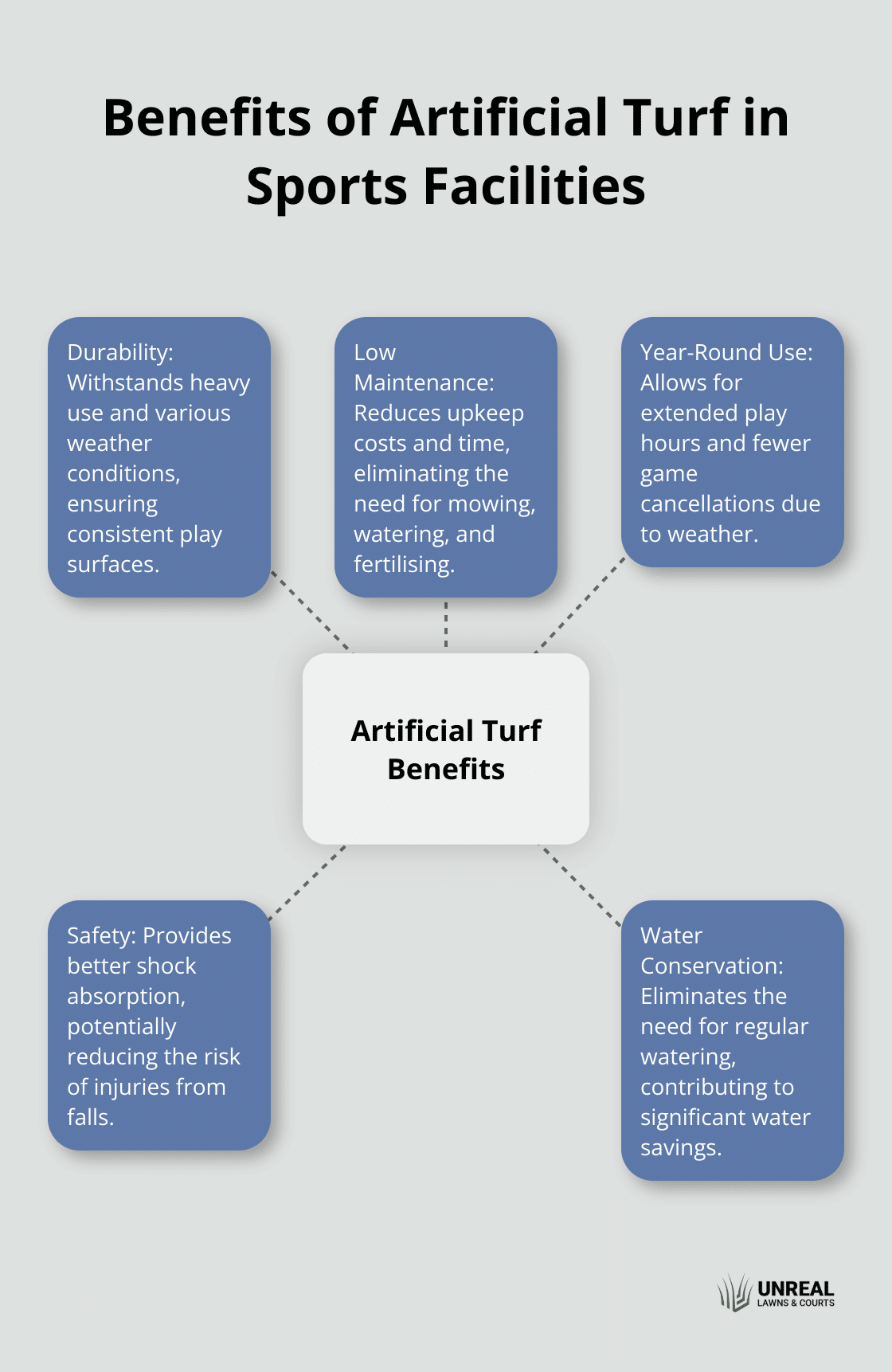
Commercial Landscapes Elevated
Businesses recognise the value of artificial grass in creating attractive, low-maintenance outdoor areas. Hotels, restaurants, and office complexes use synthetic turf to enhance their curb appeal without the ongoing costs of traditional landscaping.
Golf courses also adopt artificial turf for putting greens and driving ranges. This allows for consistent play surfaces and extends practice hours, even in adverse weather conditions.
Pet-Friendly Environments Created
Pet owners and animal care facilities turn to artificial grass for its durability and ease of maintenance. Kennels and dog parks benefit from synthetic turf’s resistance to wear and tear, as well as its improved drainage capabilities.
Synthetic turf has proven its versatility across various applications (from enhancing residential properties to improving sports facilities and commercial landscapes). This synthetic turf offers a practical, attractive, and low-maintenance solution for diverse outdoor spaces. As we explore further, we’ll examine the installation process and maintenance requirements of artificial grass, providing insights into how to maximise its benefits in any setting.
How to Install and Maintain Artificial Grass
Site Preparation: The Foundation of Success
The installation of artificial grass starts with thorough site preparation. This step involves the removal of existing vegetation to 100mm, ground levelling, and the creation of proper drainage. A well-prepared base ensures the longevity and performance of artificial grass. We use a combination of crushed stone to create a stable, well-draining foundation.
Selecting the Ideal Artificial Grass
The choice of appropriate artificial grass is essential. Consider factors such as the intended use of the area, local climate, and personal preferences. Areas with high foot traffic require more durable turf, while shaded areas might benefit from grass with UV protection. Short pile artificial grass (typically 16-30mm in height) excels in high-traffic areas, providing a safe, soft, clean, and dry playing surface.
The Installation Process
After base preparation and turf selection, the installation begins. We roll out the artificial grass and cut it to fit the area precisely. Seams are joined using special adhesive tape and glue. This step demands precision to ensure a seamless appearance.
Infill Application and Finishing Touches
Once we lay the turf, we apply an infill material (typically sand). This supports the grass fibres and adds weight to keep the turf in place. The amount of infill varies but generally ranges from 7-18 kg per square meter . Finally, we brush the grass to distribute the infill evenly and lift the fibres for a natural look.
Simple Maintenance Routines
Artificial grass requires minimal maintenance, but some upkeep is necessary to maintain its appearance. Regular brushing (weekly for high-traffic areas, monthly for less frequented spaces) helps maintain the upright position of the grass fibres. We recommend the removal of debris using a leaf blower or plastic rake. For thorough cleaning, use a mixture of mild detergent and water, followed by a rinse with clean water (particularly important for pet areas).
Synthetic sports fields need programmed and periodic maintenance. This involves specialised equipment that removes debris from deep within the turf fibres and replaces old infill material.
These installation and maintenance guidelines will help your artificial grass provide a beautiful, low-maintenance lawn solution for years to come. The initial investment in proper installation pays off in the long-term durability and appearance of your synthetic turf.
Final Thoughts
Artificial grass has revolutionised landscaping, offering numerous benefits for residential and commercial spaces. Its low maintenance requirements, year-round green appearance, and water conservation properties make it an attractive option for property owners. The durability and versatility of synthetic turf ensure a long-term return on investment, while its eco-friendly nature aligns with growing sustainability efforts.
The economic advantages of fake grass are substantial, with reduced maintenance expenses and water bills quickly offsetting the initial installation cost. Advancements in materials and manufacturing processes will likely enhance the realism and performance of synthetic turf further. We may see innovations in heat-reducing technologies, improved drainage systems, and more environmentally friendly production methods.
For those considering artificial grass for their property, Unreal Lawns & Courts offers premium solutions tailored to New Zealand’s unique climate and lifestyle needs. Our expertise in installation and commitment to quality ensure that customers receive a durable, attractive, and low-maintenance outdoor space. Artificial grass combines aesthetic appeal with functional benefits, providing a green solution in more ways than one.

